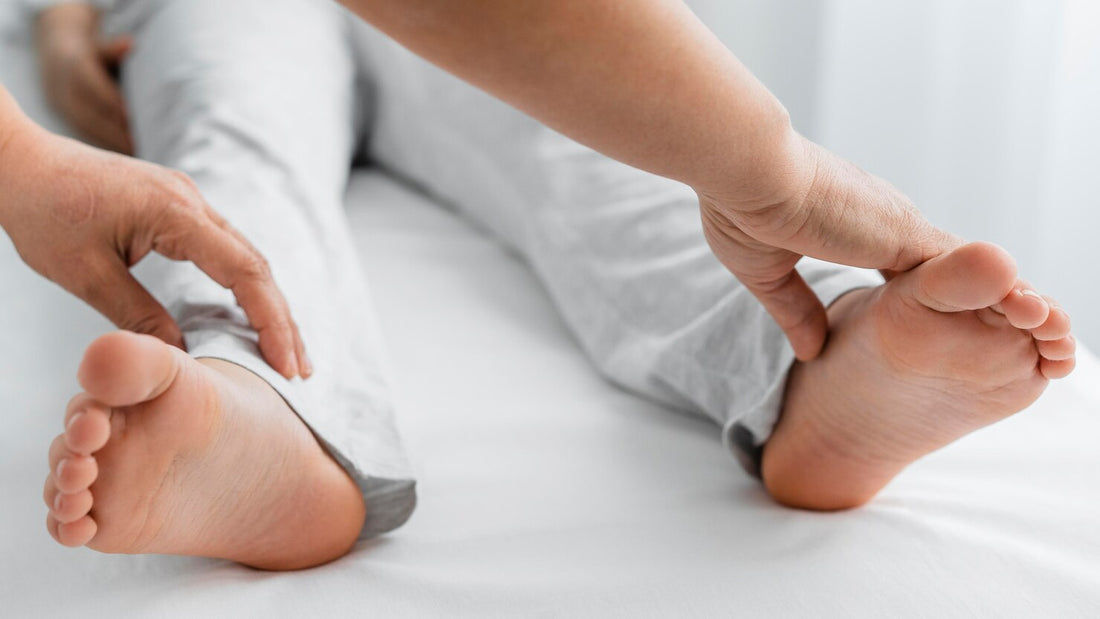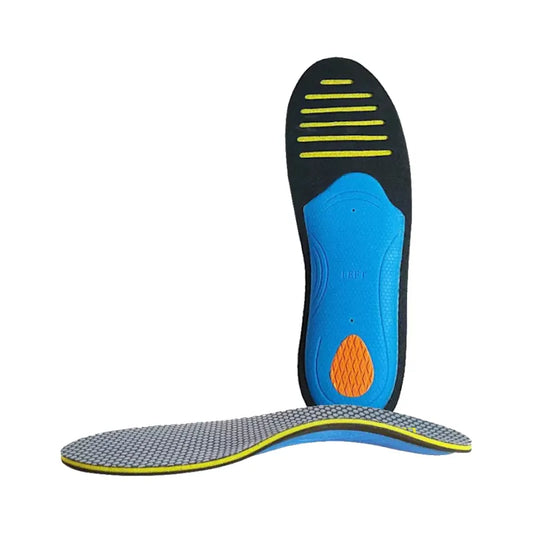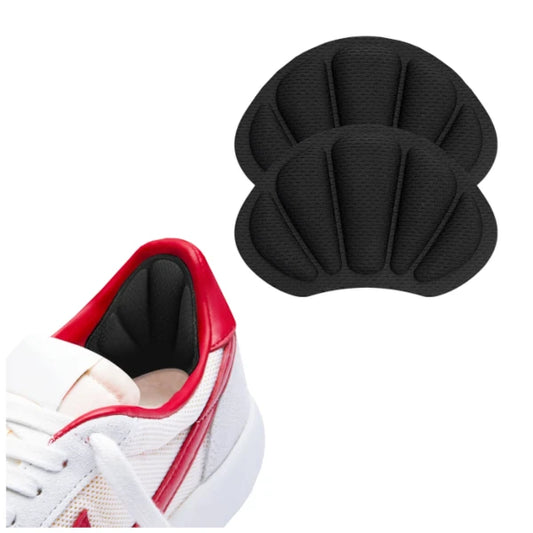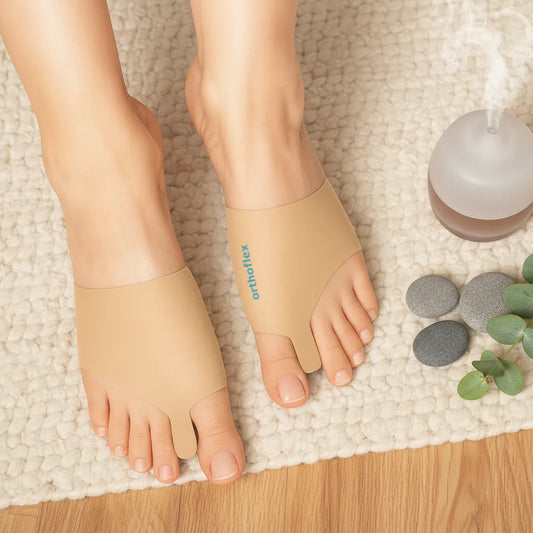
What not to do with Plantar Fasciitis?
Share
Plantar Fasciitis
Plantar fasciitis is a common problem that leads to intense foot pain, especially when you take your first steps in the morning. It can also cause pain and stiffness when you stand for long periods. The pain usually gets better as you move around and warm up, but in severe cases, it can last throughout the day and get worse as the day goes on.
If you're experiencing plantar fasciitis, it's important to seek medical advice from a healthcare professional. They will assess your symptoms, examine your foot, and recommend appropriate treatment options specifically for this condition. With proper management, most people can find relief from the painful heel and regain normal foot function.

The main goal of treatment is to reduce inflammation, relieve tension on the plantar fascia (the tissue causing the pain), and prevent further damage to the fascia. If left untreated, the pain can persist for years. Fortunately, there are various treatments available, and many patients can recover within a few weeks or months by doing simple exercises at home and making changes to their habits.
Since the condition is already painful, it's important to avoid activities that can make it worse. Here are a few tips on what to avoid:
Having a high body mass index (BMI) is closely linked to the development of foot problems, including plantar fasciitis. When you carry excess weight, it puts more strain on the plantar fascia compared to when you have a healthy weight. This increased load affects not only your feet but also your knees, hips, and ankles. In fact, the pressure on your feet can multiply by four to six times when you simply walk up a flight of stairs.
While exercise is generally beneficial for both our physical fitness and mental well-being, if you have plantar fasciitis, it's crucial to prioritise rest and modify your physical activities to prevent worsening the condition, especially until the symptoms decrease. Instead of engaging in high-impact activities like running, jumping, or dancing, it is advisable to focus on low-impact exercises. High-impact activities can place additional stress on your feet, potentially causing muscle tightness and stress-related injuries.
Your healthcare provider will likely suggest specific stretching and strengthening exercises targeting your foot, ankle, and lower leg. These exercises can help alleviate symptoms and promote healing.
If you find yourself standing for long periods, particularly on hard surfaces, it's crucial to prioritize taking regular breaks and sitting down to relieve the strain on your plantar fascia. Continuous standing, especially as a regular part of your job or daily activities, can contribute to the development of plantar fasciitis. Therefore, it's important to vary your posture as much as possible when standing for an extended duration.
By alternating your stance, shifting your weight, or incorporating brief periods of sitting or walking, you can help prevent excessive wear and tear on the plantar fascia. This variation in posture can alleviate the constant pressure on the foot, reducing the risk of developing or aggravating plantar fasciitis.
Additionally, if you do have to stand for longer periods of time, opting for a nice pair of shoes with good arch support or wearing insoles is the best you can do. This leads us to the next topic:
It's important to be aware that using flip flops, high heels, worn out shoes or even walking barefoot are choices that can increase the risk of developing plantar fasciitis. When you put excessive weight on your feet without sufficient arch support or cushioning, it can strain your plantar fascia and worsen symptoms.
worn-out shoes not only have diminished ability to absorb the impact forces exerted on your feet, but they can also disrupt the natural biomechanics of your foot. This alteration in foot mechanics can lead to additional strain on the fascia and other soft tissues of the foot.
To prevent plantar fasciitis and support foot health, it is advisable to choose shoes that provide proper arch support and cushioning. Opt for footwear that is designed to absorb shock and promote optimal foot mechanics. By selecting appropriate footwear, you can reduce the risk of straining your plantar fascia and experiencing related discomfort. If your shoes do not provide this type of support, you can always choose to use insoles or other orthotics such as arch supports, heel cups or pads.
Pain, as it’s said, is the body’s way of telling us something is wrong. If you have pain but continue pushing through it, you can cause more harm, possibly tearing or rupturing the plantar fascia. These consequences are associated with higher periods of rest and time off from activity, and even surgery.
Remember to listen to your body and avoid overexertion, allowing sufficient rest and recovery to aid in the healing process.
It is crucial to address plantar fasciitis in a timely manner to prevent prolonged healing and potential complications. Not only does it increase the risk of tearing or rupturing the plantar fascia, but also it is associated with the development of heel spur - also a very painful condition of the foot that requires a longer rehabilitation and more painful treatments (shockwave therapy). Delaying treatment can result in a longer recovery process and increase the likelihood of requiring more complex and costly interventions in the future.
With this in mind, here are some of the things you should be doing if you have plantar fasciitis:
- Rest and eliminate high impact activities
- Change your footwear to a more cushioned and supported one
- Opt by wearing nice and adequate insoles for your feet
- Keep within a healthy weight
- Respect your body and what you are feeling
- Look for a doctor if the symptoms are not reducing
- Keep in mind that the pain may take some time to go away, but don’t get unmotivated because in no time you will be back to your usual lifestyle and exercise!
Conclusion
In conclusion, it is essential to discuss your concerns with your healthcare provider and inquire about a referral to physical therapy and ask about the correct actions to take as early as possible. By seeking prompt treatment and starting the path to healing, you can optimize your chances of a successful outcome and minimize the impact of plantar fasciitis on your daily life.
Author Bio

Inês Pinheiro
Certified Physiotherapist for Shoulder and Knee Injuries
Inês is a skilled physical therapist with a special interest and extensive experience in working with athletes, specifically football players and also neurologic patients.






